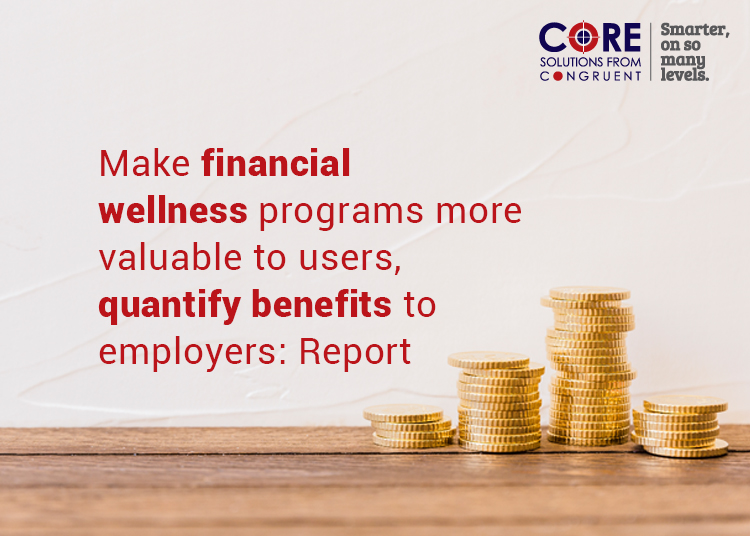
Financial wellness “sounds like a greater good upon which we can all agree” but, in practice, “earning the buy-in and support for these programs is complex”, according to a recent white paper on the topic. With strategic improvements, financial wellness programs could be more useful to, and have a greater impact on, the financial condition of employees, it says.
The white paper, titled Poor Prognosis? How to Save a Struggling Financial Wellness Program (Nov 2018), quoting data from the Market Strategies International-Morpace Cogent ReportsTM DC Participant PlanscapeTM July 2018 study, was presented at the SPARK Institute Advisory Board Meeting in Florida, in November.
The paper says that financial wellness programs “were greeted with great hopes” initially. Now, however, there are signs that “such programs have not been as impactful as expected”. In short, “plan sponsors love them, participants are lukewarm, and advisors are worryingly apathetic or sometimes even actively against the programs”.
The paper examined the state of current financial wellness programs, focusing on the key issues for several groups of stakeholders, and offered strategic recommendations. In this article, we present the findings concerning employers and employees.
Employer’s perspective
While preparing employees for retirement is a high priority for plan sponsors, one quarter of those surveyed believe that such programs are too expensive to implement, while one-fifth worry that it would take too much time.
Employee’s perspective
The study uncovered “several friction points in the user experience” to explain the “lackluster impression among participants”. It says that a “certain level of indifference” could be due to the following trends:
(a) Employees are “more secure in their financial situation, most likely a result of a relatively long period of economic expansion”.
(b) Some generations don’t want or need extra guidance (“Gen Xers and 2nd wave baby boomers are significantly more likely to feel in control of their finances”; “Millennials continue to report the lowest level of financial security though they are feeling largely on track for retirement”.)
The study revealed that some plans are not offering the right tools. It identified a “notable gap between the tools that most financial wellness programs offer and the tools that are the most popular among users”.
For example: the top three commonly offered components are Health Savings Account (HSA) guidance, online financial planning tools, and access to a financial advisor or coach. However, the three tools that attract more than 50% usage among participants are online financial planning tools (59% usage among participants whose plan offers it), credit score guidance or tracking (56%), and net worth calculator (55%).
User feedback, the study says, “shines a light on the difference between what employers prioritize” (HSA participation, for example) and what employees want, “like planning tools and data on how they’re doing today”.
The study also revealed that users felt that the tools are not good enough – the lowest ranked offering is online financial planning tools, the most used item in a typical financial wellness program. “None of the offerings earn approval rates of over 60%, suggesting that providers still need to work toward better functionality and happier users”, it says.
To improve the prognosis for financial wellness programs, the paper offers the following recommendations:
- Plan sponsors and program designers need to act on feedback from users. They should “revisit the most popular tools among users and make sure that your program offers and promotes these tools”. They should also “improve the functionality of planning tools”, “target the most receptive” employees and “direct resources toward those who do need and want help”.
- Show the true time and cost to implement the program to employers, and quantify the benefits.
- Win over advisors, and “evaluate how you can make them a more integral part of the program’s design”.
This is part 2 of a two-part article on financial wellness. Read the first part here.
